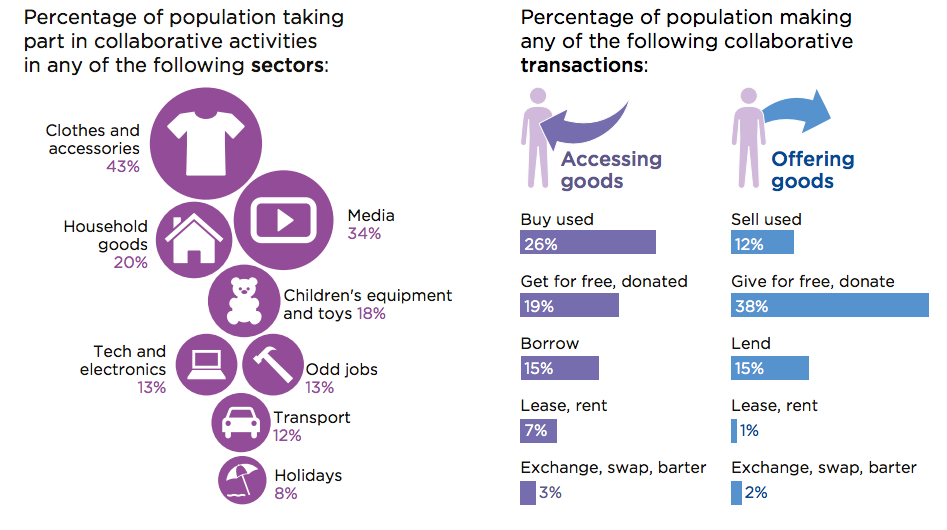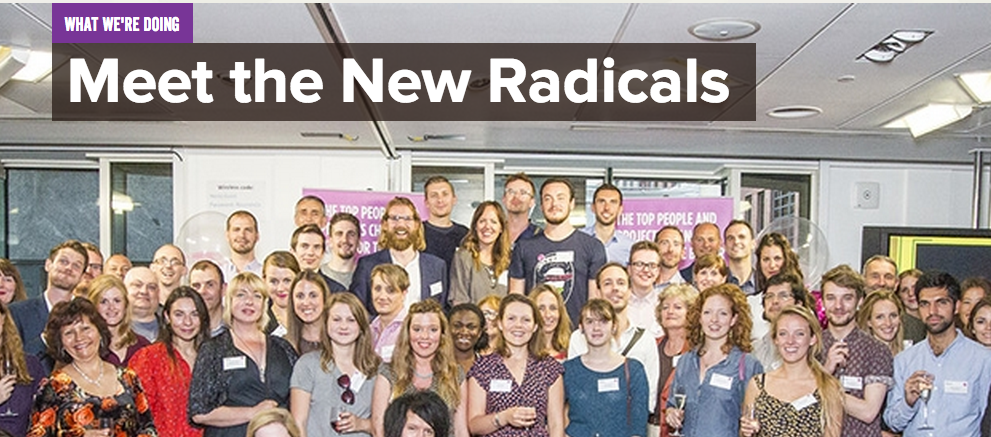The collaborative economy is alive and well "across the pond" in Great Britain, according to Making Sense of the Collaborative Economy, a new report published this month by UK innovation nonprofit Nesta and Collaborative Lab, a consultancy that helps governments and businesses adapt to the collaborative economy. The report provides an in-depth conceptual framework and discussion of the history, artifacts and features of the sharing economy, proposing five universal traits:
1. Enabled by internet technologies.
2. Connecting distributed networks of people and/or assets.
3. Making use of the idling capacity of tangible and intangible assets.
4. Encouraging meaningful interactions and trust.
5. Embracing openness, inclusivity and the commons.
The report also identifies four major sector, or pillars, of the collaborative economy:
Pillar 1 Collaborative consumption: Gaining access to goods or services through bartering, renting, lending, trading, leasing, exchanging, re-selling and swapping.
Pillar 2 Collaborative production: Groups or networks of individuals collaborate to design, produce or distribute goods.
Pillar 3 Collaborative learning: Learning experiences that are open to anyone and where people share resources and knowledge to learn together
Pillar 4 Collaborative finance: Funding, lending and investment services offered outside of traditional financial institutions.
Finally, the report identifies four distinct business models for collaborative economy:
Business–to–Consumer (B2C): The interaction between consumers and companies who own or directly manage their inventory.
Business–to–Business (B2B): The interaction between a business and other companies who own or directly manage their inventory.
Peer–to–Peer (P2P): The interaction between two or more people to trade or exchange a good or service facilitated and supported by a company, organisation or platform that is not directly involved in the transaction.
Consumer–to–Business (C2B): The interaction between consumers and a company where the company benefits from and pays for the knowledge or assets of the consumer.
The study indicates that one quarter of Britons participated in the internet-enabled collaborative economy over the last year by utilizing technology to share goods and services, while 64% participated in sharing activities internet-enabled or not.

They did so across a range of sectors, by both accessing and offering goods and services.

They were more likely to be white, between the ages of 25-44, and of the higher social grades as defined by the UK National Readership Survey. Women were more likely to participate overall, whereas men were more likely to participate in the internet-enabled collaborative economy.


The study found that a majority (64 percent) of collaborative economy organizations commenced operations after 2010, and 89 percent were established since 2000. Organizations operated across the four pillars and offered services from learning to renting/leasing to funding,
The report engages in a discussion of barriers to wider adoption of the sharing economy and policy questions that will need to be addressed, such as government operations, legal structures, tax policy, licensing and certification, insurance, and planning and land use, and offers a provisional framework for policy assessment.
Finally, the report discusses and evaluates several examples of progress in the policy arena in the areas of short-term rental, public-private partnerships, and public declarations of support, such as the adoption of Shareable Cities resolutions by major cities.
Download the full report here.









